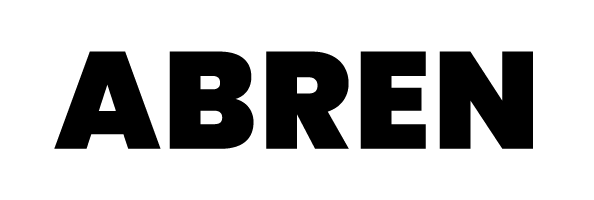|
Getting your Trinity Audio player ready...
|
The past three years have been tumultuous in Ethiopia. This nation of 117 million has been rocked by an armed seditious insurrection and weathered a series of global crises as a consequence of the Covid pandemic and the war in Ukraine. These external shocks have compounded the country’s structural fissures.
Recently, many felt relieved by the welcomed breakthrough of November 2022. A tenuous peace agreement was signed, ending the two-year long war between the Tigray People’s Liberation Front (TPLF), an armed insurgency in the northern Tigray region, and the Government of Ethiopia (GoE). As of now (December 2022), despite fears of relapse, the northern conflict seems to be edging closer to an enduring peace.
Although the conflict in the north has been the most concerning for the risks to national and regional stability, it is not the only security challenge faced by the GoE. Alongside the TPLF insurgency, Ethiopia’s Wellega, a western sub-region in the country’s largest ethnic enclave of Oromia, has been plagued by a three year long armed turmoil led by the Oromo Liberation Army (OLA), informally referred to as Shene. In 2018 the OLA came into being as a small splinter group that broke away from the Oromo Liberation Front (OLF), one of several armed rebellions born out of Ethiopia’s revolution, which ultimately deposed Emperor Haile Selassie I in 1974.
One could hardly say OLA broke with OLF over ideological disagreements. Most agree it had no ideology or plan. It was purely borne out of opportunism. Yet some fringe hardliners still prefer an armed insurrectionist path forward to secure what they deem to be the interests of the Oromo, the country’s largest and most sundry ethnic group. On the other hand, the majority of the OLF officially embarked on a reformist, middle of the road path forward, a position closer to Ethiopia’s ruling party. In the middle, opportunists straddle the fence.
Despite its small size, OLA found a patron in the TPLF, which needed a partner to resist Abiy’s reformist new administration seeking to rollback the outsized influence of the former regime. The now deceased former intelligence chief of Ethiopia, Getachew Assefa, himself a leading figure within the TPLF was given charge of organizing and training OLA fighters throughout 2018 and 2019. During this period OLA would grow from roughly 30 fighters to more than two thousand. More recently another split occurred. There are now two groups, which call themselves OLA-Shene. One led by Jal Marro and another by less known Fekade. According to locals, the two groups oppose each other, but no less are deadly to civilians in the region.
The OLA’s extremist version of Oromo nationalism has been bloody and marked by executions of civilians, abduction of children for ransom, and disappearances of political opponents. Most glaring has been the group’s calculated and deliberate mass killings targeting Amhara residents in several conflict hotspots. In July 2022, a report by Abren outlined “Alarming reports of ethnically motivated massacres by declared terror group, Oromo Liberation Army (OLA), targeting mainly Amhara civilians in Hawa Gelan and in Kellem, Wollega took the lives of 340 individuals, many of them women and children”.
Such attacks aim to destabilize the ruling party’s most important coalition between political elites of the Amhara region and the that of the Oromo. Together these two regions comprise 70% of Ethiopia’s population and its geographic heartland. This tactical alliance, informally dubbed Oromara, had been instrumental in sidelining the TPLF, which dominated Ethiopian politics since the early 1990s, having forcibly ousted the former military government. Abren has described the precipitous decline of TPLF in previous posts.
Leaders of the TPLF had long feared formation of such an alliance between the Oromo and the Amhara that could threaten their senior position within the ruling party, which they managed to hold together and dominate from 1991 until 2018. But eventually that is exactly what happened. Reversing it has been an obsession of the group ever since.
The Government of Ethiopia has overcome an insurrection led by the clique that formerly ruled the country. However, anti-government forces continue to use every means available to uproot the state. For the time being the OLA seems to have supplanted the TPLF as the most destabilizing force. The group’s tentacles within the Oromo regional administrative bureaucracy, extent of which is still murky, complicates matters. At the very least, we know it continues to enjoy support in Wellega, where it has been most active. Most of the group’s leadership as well as its fighters are recruited from this region. According to Ethiopia’s Human Rights Commission, a majority of ethnically targeted massacres in the past 4 years have occurred in this region.
A recent anti-corruption drive whereby hundreds of officials have been arrested seems to have disturbed the hive again, or rather “the den of thieves”, as one Ethiopian government official pointed out on television. Some commentators who favor Prime Minister Abiy describe the recent flurry of violence in Wellega as retribution for mass arrests targeting corrupt officials in Oromia with links to a shadow government that is also connected to the OLA. They go further to illustrate formal TPLF alliance, made public by the two-armed groups in August 2021.
Nevertheless, graphic images of atrocities committed by the OLA are intentionally fanned by extremist outlets on social media, with aim of outraging members of the Amhara community. This in turn is fueling fringe elements within the Amhara political discourse who seek to paint the conflict as war between the two ethnic groups. Some even insinuate that the Prime Minister is complicit in the attacks. While these claims maybe untrue and even outlandish, given the government’s glaring communication failures, the whole thing lends itself to ominous conspiracies. Unfortunately for the public, perception is reality and silence is not a plan or a policy.
“All of it falls in line with the perpetrator’s plan, which is to provoke an angry reaction by members of the Amhara community, which could potentially lead towards spiraling intercommunal conflict, that then could weaken the central state”, says Seyoum Teshome, a regular political commentator on Ethiopian media outlets. Professor Brehanu Nega, a long time opposition figure who is now Minister of Education says, “those who back a violent regime change agenda have deliberately sought to infuse a sense of lawlessness and fear by carrying out heinous atrocities and broadcasting it on social media “. He adds, “extremists on all side are fools for believing their interests and their kin or tribe are better protected in a vicious cycle of violence and retribution”.
Indeed armed groups attempting to overthrow the government by force stand to gain from such a scenario. Not too long before the peace agreement was reached, general Tadesse Werede of the Tigay rebels said this was one of their key strategies. Nonetheless, most people’s worries are other than the antics of polarizing politics on social media. To them daily life is a matter of most importance. That contrast can be seen in Addis Ababa, where residents are more concerned about the rising cost of living than anything else.
According to Seyoum, “given the new age of social media, where it is difficult to control the narrative or suppress disinformation, silence makes things worse”. He is among many activists who believe the government has not done enough to bring order. A member of the regional Oromo congress, known as Cheffee Oromia reached by phone, who declined to be named, remarked, “Shene’s actions are condemned by the Oromia regional leadership, but diehard Oromo nationalists have sought to leverage violent groups for their own agenda, and this situation is being complicated by reports of Fano (an Amhara militia group) involvement in recent cashes”.
The recent clashes referred to occurred in Kiremu, a small town, 287 miles northwest of Addis Ababa on December 2nd, 2022, when residents fought back, as Shene fighters killed dozens of Amhara civilians of the town. Reports indicated Fano militia men from the neighboring Amhara region were part of the clashes. He continued, “however, the real issue is lack of consensus among the regional Oromo politicians themselves on steps forward”.

Oromia, a vast region that encompasses most of central Ethiopia is also the most diverse and most populated. Outside of the majority Afan Oromo speakers, an estimated 13 million people from other ethnic groups call it home. Many towns and villages are too rural and difficult to access by road. Consensus on regional political issues is difficult, with many sitting on several sides on the political fence at any given time.
As happened many times before, Ethiopia’s national army has been called to intervene and stabilize this most recent flashpoint, but the root cause largely eludes authorities. In the meantime, the public continues to be frustrated by the lack of direction or plan coming from the top. Close observers of events in Ethiopia believe regular engagements with the public on these issues and a roadmap forward would go a long way to ease the pressure.
Prime Minister Abiy’s popularity, which was cemented in his party’s 2021 landslide election victory has since waned. Armed opposition groups, in some cases supported by outside powers, have successful used violence to delay, if not derail ambitious reforms of the Prime Minister. Many Ethiopians had eagerly wanted to see changes made sooner to the country’s ethnic based constitution, the only one of its kind in the world.
For now, the pace of political and economic reforms promised by Abiy administration have slowed, but not yet ground to a halt. Repeated atrocities targeting civilians for their ethnicity and the government’s ineffective response has emboldened extremist elements on all sides. Looking forward, restoring calm and embarking on a national dialogue will be a priority on par with ambitious developmental goals of ruling party. But concrete action and the public’s constructive cooperation is needed.











You must be logged in to post a comment.